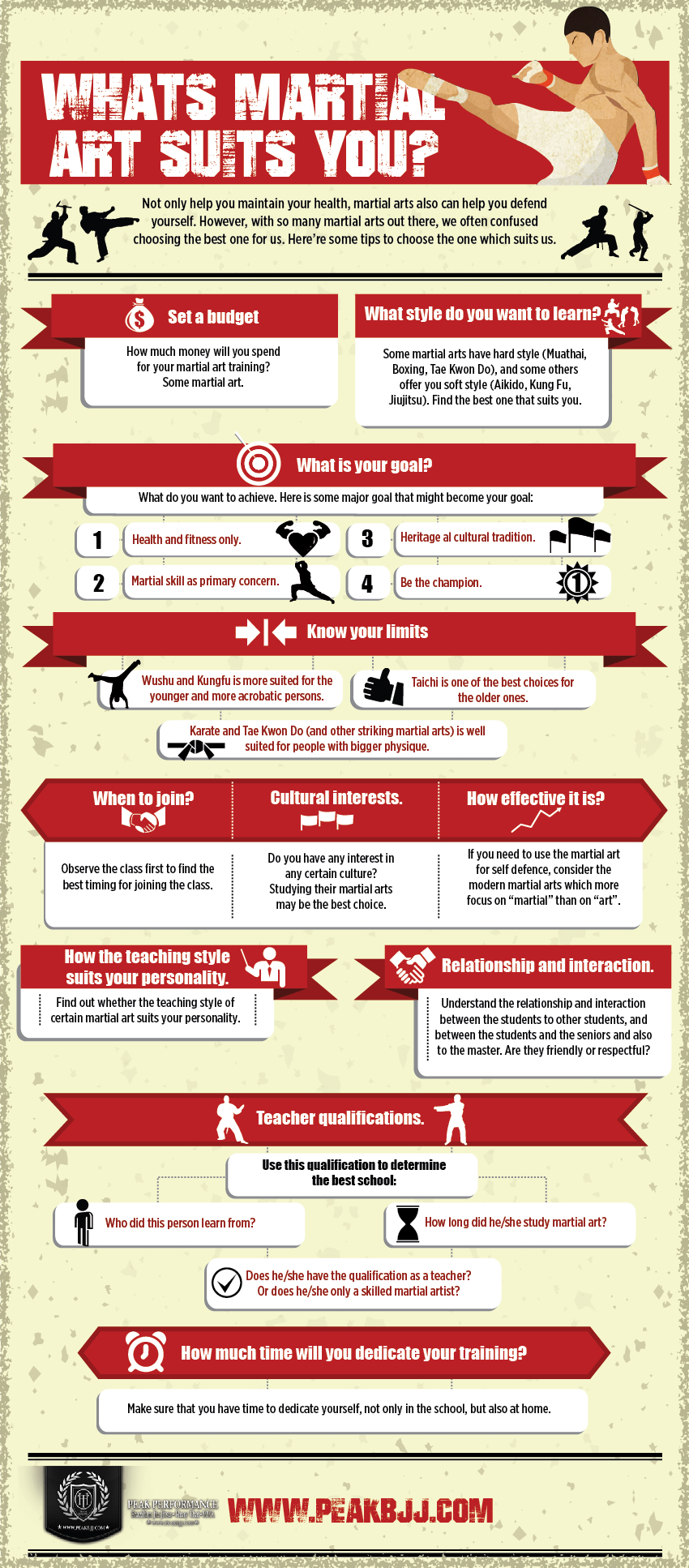Deciphering The Secret Of Multiple Martial Arts Techniques: A Guide To Martial Arts, Taekwondo, And Extra
Deciphering The Secret Of Multiple Martial Arts Techniques: A Guide To Martial Arts, Taekwondo, And Extra
Blog Article
a knockout post -Carlson Haastrup
Are you tired of feeling overwhelmed by the large globe of martial arts? With numerous styles to choose from, it can be very easy to obtain lost in a sea of strikes, kicks, and mystical names. But fear not!
https://castingcallkidsmartialart12100.blogvivi.com/33069739/psychological-sturdiness-preparing-for-martial-arts-training will debunk the different martial arts styles, taking you on a journey from the powerful strikes of Karate to the dynamic kicks of Taekwondo. Prepare to uncover the origins, methods, and approaches behind these ancient art kinds.
So, tighten your belt and prepare to embark on an informing expedition into the captivating globe of martial arts.
Origins of Martial Arts Styles
The beginnings of martial arts styles can be traced back to ancient human beings and their demand for self-defense and battle methods. Throughout history, various cultures established their own unique approaches of combating, each with its own collection of techniques and viewpoints.
In China, as an example, martial arts styles such as Kung Fu and Tai Chi were established as a way of self-defense and improving physical and mental wellness.
In Japan, the samurai warriors created styles like Martial arts and Judo, focusing on discipline, precision, and proficiency of the body.
Similarly, in Korea, Taekwondo became a fighting style highlighting high kicks, fast activities, and psychological perseverance.
https://cafemom.com/news/martial-arts-instructor-accused-of-beating-student-to-death laid the structure for the varied range of fighting styles styles that exist today, each with its own rich history and cultural value.
Methods and Training Approaches
To understand fighting styles designs, experts need to discover different strategies and training techniques.
Techniques are the details activities and actions utilized in combat, such as punches, kicks, throws, and blocks. Different fighting styles designs have their own unique collection of methods that professionals must master with strenuous training.
Training approaches vary depending upon the style, however they typically include a mix of physical conditioning, drills, competing, and forms.
Physical conditioning is crucial to build strength, versatility, and endurance. Drills assist experts refine their methods and improve their rate and accuracy.
Sparring permits professionals to exercise their methods in a managed, practical atmosphere. Kinds, also referred to as kata, are cut-and-dried series of activities that help practitioners develop muscle memory and focus.
Approaches and Principles
Checking out the viewpoints and principles of fighting styles designs can give you with a deeper understanding of your selected discipline. Each fighting style has its very own one-of-a-kind approach and collection of assisting concepts that shape the way it's exercised.
For instance, Martial arts stresses technique, regard, and self-constraint. It teaches practitioners to concentrate their body and minds, allowing them to protect themselves while preserving a sense of inner peace.
On the other hand, Taekwondo places a solid emphasis on speed, dexterity, and versatility. Its principles are rooted in the tenets of courtesy, honesty, perseverance, self-discipline, and unbeatable spirit.
Verdict
Now that you have actually explored the origins, strategies, and ideologies of various fighting styles styles, you have a much deeper understanding of these ancient self-controls.
Picture a young karate pupil, exercising with unwavering decision and emphasis, breaking through boards with a powerful punch.
Their journey showcases the dedication and strength required to grasp a fighting style, advising us that with technique and determination, anything is possible.
